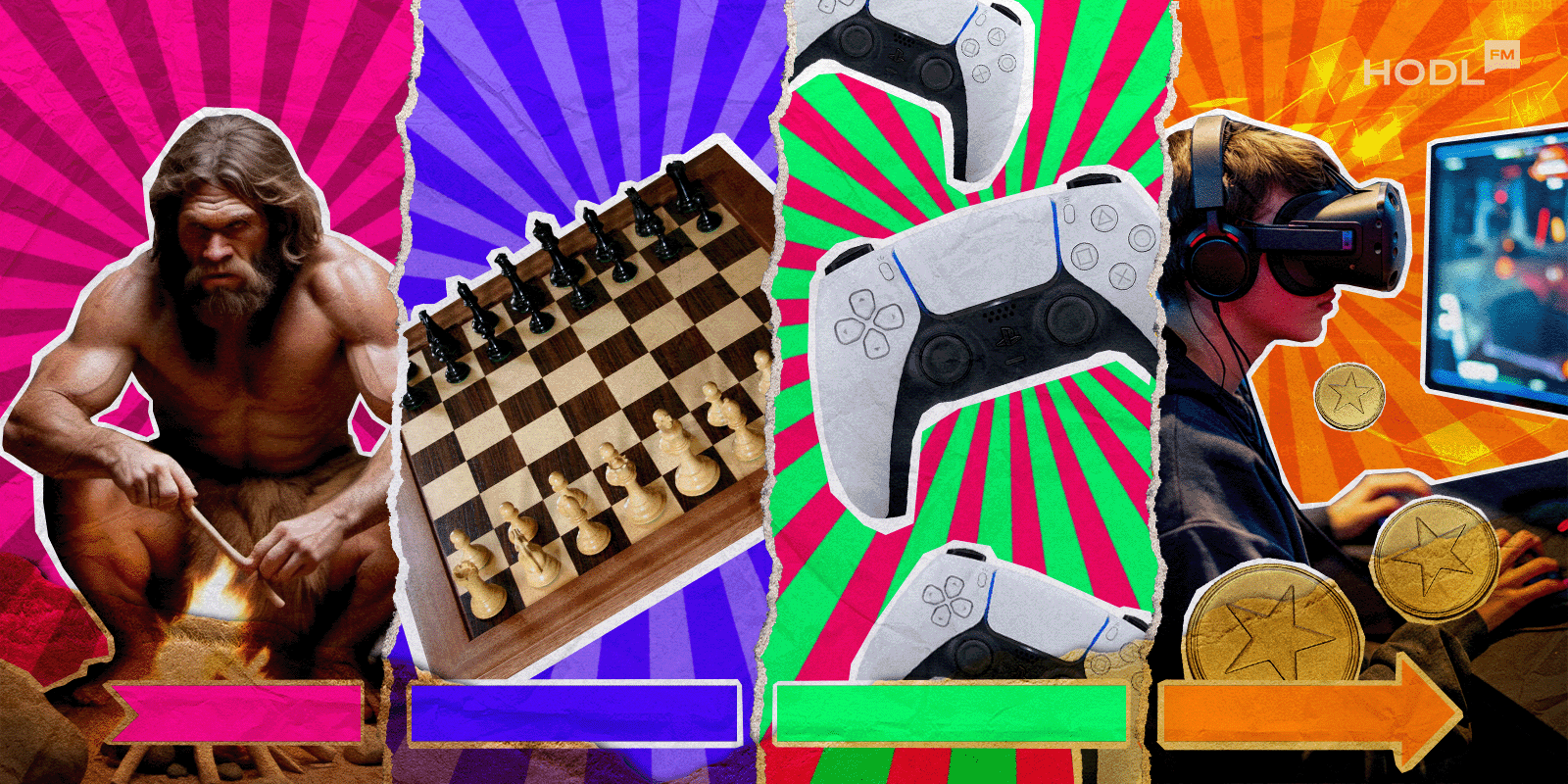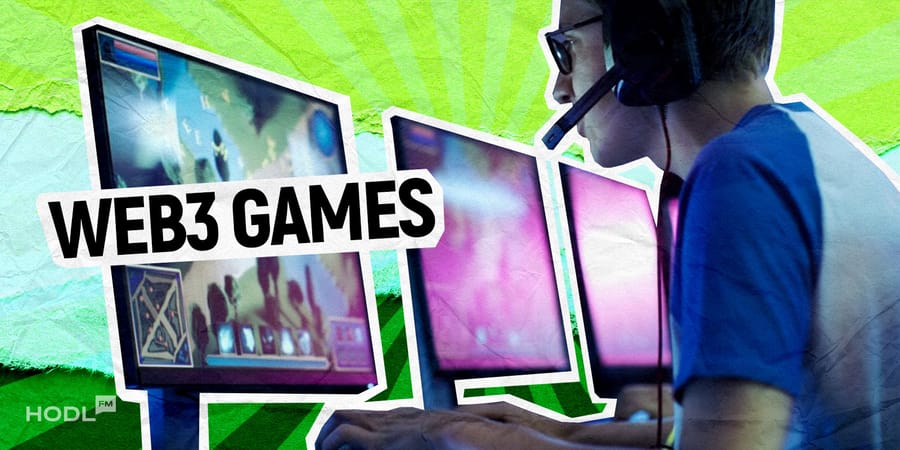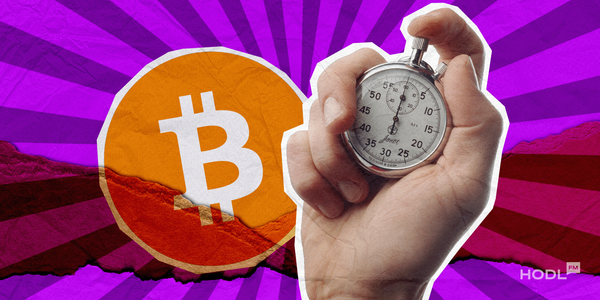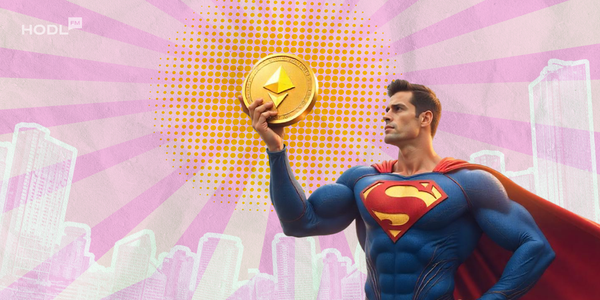The State of Web3 Gaming in 2025
The web3 gaming in 2025 bears little resemblance to its humble beginnings just a few years ago. What started as a niche experiment combining blockchain technology with basic gameplay has optimized into a sophisticated ecosystem that's challenging traditional gaming paradigms and attracting millions of mainstream players.
Gone are the days when "play-to-earn" was simply about grinding for tokens with little regard for gameplay. Today's web3 games prioritize immersive experiences first, with economic opportunities seamlessly integrated rather than forced as the primary attraction. The industry has matured beyond the "earn-first" mentality that dominated early projects, focusing instead on sustainable economies, genuine player ownership, and gameplay that stands on its own merits.
The numbers tell a compelling story: web3 gaming now represents a $43 billion market, with over 100 million monthly active users across various blockchain networks.
Major studios have entered the space, bringing AAA production values alongside the decentralized benefits that blockchain enables. Meanwhile, traditional gaming giants have incorporated selective web3 elements into their ecosystems, legitimizing the technology for mainstream audiences.
Technological barriers that once limited adoption have largely disappeared. Gas fees are negligible thanks to layer-2 solutions and purpose-built gaming chains. Onboarding has been streamlined to the point where many players don't even realize they're interacting with blockchain technology until they discover they truly own their in-game assets.
Perhaps most significantly, 2025 has seen web3 gaming transcend its previous reputation as merely speculative. Players now engage primarily for entertainment while benefiting from digital ownership, community governance, and potential economic returns—a fundamentally different value proposition than traditional gaming can offer.
In this comprehensive guide, we'll explore the leading projects defining this new era of gaming, examine their innovations, and look ahead to emerging trends that will shape the industry's future.
The Leading Web3 Gaming Projects of 2025
1. Axie Infinity - The Pioneer Reborn
Developer: Sky Mavis
Blockchain: Ronin (Ethereum sidechain)
Token: AXS, SLP
Once the poster child for unsustainable play-to-earn economics, Axie Infinity has undergone a remarkable transformation to become one of web3 gaming's most enduring success stories. The 2025 version of Axie bears little resemblance to its predecessor, having transformed from a simplistic creature-battling game into a full-fledged ecosystem spanning multiple interconnected experiences.
Axie Infinity: Origins forms the foundation, offering accessible turn-based strategic gameplay that appeals to both casual and competitive players. The economy has been completely rebuilt around sustainable tokenomics, with proper sink mechanisms ensuring long-term viability. Land gameplay now allows for construction of structures that generate resources, host mini-games, and enable social interactions in the Axie metaverse.
The most significant evolution has been Axie Infinity: Realms, an action RPG expansion featuring fully 3D environments and real-time combat that rivals traditional gaming experiences in quality. This expansion attracted a new demographic of players who came for the gameplay and stayed for the ownership benefits.
With over 8 million monthly active users and an economy that has stabilized after the boom-and-bust cycles of its early years, Axie has cemented its position as the elder statesman of web3 gaming. Sky Mavis continues to iterate on its ecosystem, with their next major innovation being cross-game asset interoperability within their expanding universe.
2. Illuvium - Setting the Standard for AAA Web3 Gaming
Developer: Illuvium Labs
Blockchain: Immutable X
Token: ILV, sILV
Illuvium has realized its ambitious vision of delivering a true AAA experience on blockchain technology. This open-world RPG combines stunning visuals, compelling narrative, and complex gameplay loops that rival traditional console titles, while leveraging blockchain for asset ownership and economic participation.
The core experience centers around exploring alien markets, capturing deity-like creatures called Illuvials, and battling them in auto-chess style competitions. What sets Illuvium apart is its exceptional production values—powered by Unreal Engine 5—and its expansive scope, which now encompasses:
- Illuvium: Beyond – The flagship open-world exploration and collection game
- Illuvium: Arena – Competitive auto-battler with esports integration
- Illuvium: Zero – A complementary land and resource management simulation
- Illuvium: Voyage – A mobile companion game that ties into the broader ecosystem
The project's DAO governance structure has matured into one of the most sophisticated in the space, with stakeholders having genuine influence over development direction and economic parameters. Meanwhile, its revenue-sharing model has created one of the more sustainable token economies in web3 gaming.
Illuvium's 2025 roadmap includes expanding cross-platform play, deeper integration between its various game modes, and continued narrative expansion of its rich universe. With over 3 million players and growing recognition in mainstream gaming circles, Illuvium stands as proof that blockchain integration can enhance rather than detract from premium gaming experiences.
3. The Sandbox - The Ultimate Creator Metaverse
Developer: Animoca Brands
Blockchain: Polygon
Token: SAND, LAND
The Sandbox has grown from its voxel-based beginnings into the definitive creator-driven metaverse platform of 2025. What distinguishes The Sandbox from traditional user-generated content platforms is the unprecedented level of ownership it provides to creators and players alike.
The platform's three primary tools have been significantly enhanced:
- VoxEdit now supports advanced animation capabilities and AI-assisted content creation
- Game Maker has been developed to include visual scripting comparable to professional game engines
- Marketplace features AI-powered discovery and cross-metaverse interoperability standards
The Sandbox's partnerships remain unmatched in the space, featuring collaborations with major entertainment brands, fashion houses, and celebrities who have established permanent presences within the metaverse. Major music festivals, fashion shows, and interactive entertainment experiences have become regular occurrences, attracting both web3 natives and mainstream audiences.
The platform's economy has stabilized around genuine utility, with LAND parcels functioning as productive digital real estate where creators earn through experiences, virtual goods, and services. The introduction of The Sandbox Districts—specialized zones dedicated to gaming, education, commerce, and entertainment—has created thriving sub-communities with their own governance mechanisms.
With over 12 million monthly active users and more than 500,000 creators generating content, The Sandbox has become a legitimate alternative to centralized platforms like Roblox, with the crucial difference that value accrues to creators rather than platform owners alone.
4. Star Atlas - The Blockchain Space Opera
Developer: ATMTA, Inc.
Blockchain: Solana
Token: ATLAS, POLIS
After years of development and anticipation, Star Atlas has finally delivered on its promise of a fully realized space-based MMO powered by blockchain technology. This visually stunning game leverages Unreal Engine 5's capabilities to create one of the most graphically impressive titles in gaming, regardless of technology.
Set in the year 2620, Star Atlas places players in a contested galaxy where three major factions—humans, aliens, and sentient androids—compete for resources, territory, and political influence. The game combines space exploration, combat, resource gathering, crafting, and territory control into a complex, player-driven economy where actions have permanent consequences.
What makes Star Atlas particularly noteworthy is its seamless integration of blockchain elements:
- Ships, equipment, crew members, and land claims exist as NFTs with genuine utility
- The dual token system (ATLAS for in-game currency, POLIS for governance) enables both economic activity and political participation
- DAOs govern different aspects of the game, from faction policies to economic parameters
The 2024 launch of the "Convergence" expansion marked a turning point, introducing fully realized planets with atmospheric flight, ground combat, and base building. This dramatically expanded the gameplay possibilities beyond the original space-focused mechanics.
With approximately 4.5 million registered players and a thriving economy where player actions drive everything from commodity prices to territorial control, Star Atlas stands as the most ambitious blockchain MMO successfully delivered to date. The development team continues expanding the universe with regular content updates and has begun implementing AI-driven NPC behaviors that adapt to player actions.
5. Gods Unchained - The Competitive Card Game Reinvented
Developer: Immutable
Blockchain: Immutable X
Token: GODS, IMX
Once positioned as merely "Hearthstone on blockchain," Gods Unchained has risen into the premier competitive digital card game across any platform. What began as a proof of concept for digital ownership in trading card games has matured into an esports phenomenon with mechanics deep enough to sustain professional play.
The game maintains the core appeal of collecting, building decks, and strategic combat, while introducing innovative mechanics only possible through blockchain technology:
- Cards that transform and optimize based on their battle history
- Deck configurations that can be rented or borrowed through smart contracts
- Limited-edition cards with provable scarcity that influence meta-game strategies
Gods Unchained's competitive scene has grown substantially, with a $5 million annual tournament circuit that rivals traditional esports. The introduction of mobile support in 2023 dramatically expanded the player base, bringing the total to over 15 million registered accounts.
What truly distinguishes Gods Unchained is its economy, which has remained stable despite market fluctuations. Cards retain utility and value through careful balance updates and the "Divine Order" system, which retires certain cards from competitive formats while ensuring they remain playable in legacy modes.
The recent "Pantheon Wars" expansion introduced faction-based territorial control elements, adding a meta-game layer where player communities compete for resources that unlock special cards and cosmetics. This community-driven content has created social structures that extend beyond individual matches into broader strategic cooperation.
6. Gala Games Ecosystem - The Web3 Publisher Powerhouse
Developer: Gala Games
Blockchain: Gala Chain (purpose-built gaming blockchain)
Token: GALA
Rather than focusing on a single title, Gala Games has established itself as the premier web3 gaming publisher, operating an ecosystem of high-quality games that share economic infrastructure while maintaining distinct gameplay experiences. This diversified approach has created resilience unusual in the blockchain gaming space.
The Gala ecosystem now encompasses over 25 games across multiple genres, with standout titles including:
- Spider Tanks – A competitive PvP arena battler with customizable mechs
- GYRI – An open-world survival MMO with territorial control mechanics
- Mirandus – A fantasy RPG with player-owned land and businesses
- Superior – A superhero-themed action RPG with narrative choices
What unifies these experiences is the Gala Chain infrastructure, purpose-built for gaming with negligible fees and high transaction throughput. The common GALA token serves as the ecosystem's currency, with each game also featuring its own tokens and NFTs that retain utility across multiple titles.
Gala's node system has been modified into a sophisticated network where operators earn rewards by providing computational resources to the ecosystem. This has created one of the most decentralized infrastructures in blockchain gaming, with over 50,000 nodes supporting the network.
With a combined user base exceeding 20 million players across all titles and strategic partnerships with major entertainment brands, Gala Games has demonstrated that a publishing approach can create more sustainable value than single-game projects. Their 2025 initiatives include an ambitious cross-game avatar system and expanded interoperability features.
7. Splinterlands - The Accessibility Champion
Developer: Splinterlands, Inc.
Blockchain: Hive, WAX (multi-chain)
Token: SPS, DEC
From modest beginnings, Splinterlands has grown into one of the most widely played blockchain games by prioritizing accessibility, compelling game mechanics, and sustainable economics. This card-based strategy game has thrived by focusing on gameplay first, while seamlessly integrating digital ownership.
Splinterlands combines elements of collectible card games with auto-battler mechanics, allowing players to assemble teams of creatures with complementary abilities to battle opponents. The game's primary innovations include:
- Cross-chain asset functionality allowing cards to exist on multiple blockchains
- A land expansion enabling resource production and territory-based gameplay
- Guild systems where players pool resources and share rewards
- Tournament structures with significant prize pools
What truly distinguishes Splinterlands is its focus on accessibility—the game runs in-browser with minimal hardware requirements and features a gradual onboarding process that introduces blockchain elements only after players understand core mechanics. This approach has yielded impressive retention rates and a diverse player base spanning traditional gamers and crypto enthusiasts alike.
The economy has demonstrated remarkable stability through multiple market cycles, thanks to careful tokenomics design and regular burning mechanisms. The introduction of the "Eternal Legends" expansion in 2024 added a new layer of strategic depth with multi-card combinations and evolutionary mechanics.
With over 18 million registered accounts and 2.5 million monthly active players, Splinterlands remains proof that accessibility and thoughtful design can create more sustainable adoption than flashy graphics or speculative economics.
8. Big Time - The Action RPG Revolutionized
Developer: Big Time Studios
Blockchain: Optimism (Ethereum L2)
Token: BIGTIME
Founded by gaming industry veterans from Epic Games, Riot Games, and Blizzard, Big Time has delivered on its promise to create a high-quality action RPG that seamlessly integrates digital ownership without compromising gameplay. The result is a fast-paced, multiplayer dungeon-crawler that stands on its gaming merits first, with blockchain elements enhancing rather than defining the experience.
Players journey through time and space, battling enemies, collecting loot, and customizing their characters across various historical and fictional settings. The game features:
- AAA-quality combat mechanics with multiple character classes and progression systems
- Instanced dungeons with varying difficulty levels and unique rewards
- Player-owned time machines that serve as customizable personal spaces
- Cosmetic and functional items with verifiable ownership and provenance
Big Time's innovative "Play Forever" model removed the initial barriers to entry by making the core game free to play, with revenue generated through cosmetic items, premium expansions, and marketplace fees. This approach attracted traditional gamers who gradually discovered the benefits of true digital ownership.
The game's economic model focuses on utility rather than speculation, with items holding value based on their in-game functionality, rarity, and aesthetic appeal. The introduction of the "Chronos Forge" system allowed players to craft and customize items, adding a creative dimension to the economy.
With 7 million registered players and consistent growth even during crypto market downturns, Big Time has proven that traditional gaming quality combined with blockchain benefits can create experiences that appeal far beyond the crypto-native audience.
9. Shrapnel - The Blockchain FPS Breakthrough
Developer: Neon Machine
Blockchain: Avalanche
Token: SHRAP
After years of skepticism about whether first-person shooters could meaningfully benefit from blockchain integration, Shrapnel has definitively answered that question. This extraction-based tactical shooter combines Counter-Strike-inspired gameplay with unique ownership mechanics that have created a new paradigm for competitive FPS games.
Set in a near-future where a devastating asteroid impact has created valuable but dangerous extraction zones, Shrapnel challenges players to strategically enter these areas, gather resources, and escape alive—with permanent consequences for failure. The game's core innovations include:
- Operator NFTs with specialized abilities and progression systems
- Weapon modification and crafting with components earned through gameplay
- Player-designed maps and modes that generate revenue for their creators
- Tournament systems with significant prize pools and qualification pathways
What distinguishes Shrapnel is its commitment to competitive integrity. Unlike early blockchain games where spending power determined outcomes, Shrapnel maintains strict balance by ensuring purchased items provide visual customization and progression shortcuts rather than competitive advantages.
The game's creator economy has flourished, with the most popular community-designed maps and modes generating substantial revenue for their creators. This has established a legitimate alternative career path for content creators previously dependent on centralized platforms.
With 6 million registered players and growing recognition in traditional esports circles, Shrapnel has proven that even skill-based competitive genres can benefit from blockchain integration when implemented thoughtfully. The recently announced "Deadzone" expansion will introduce territory control mechanics and faction-based warfare in late 2025.
10. My Neighbor Alice - The Social Simulation Breakthrough
Developer: Antler Interactive
Blockchain: BNB Chain
Token: ALICE
Inspired by games like Animal Crossing and Stardew Valley, My Neighbor Alice has been modified from a simple simulation game into a complex social ecosystem that leverages blockchain for true player ownership and economic participation. This colorful, accessible title focuses on community building, creative expression, and virtual entrepreneurship.
Players explore a whimsical world where they can purchase land, build homes, farm resources, craft items, and interact with a cast of eccentric NPCs. The blockchain integration enables:
- Player-owned islands that can be customized, developed, and monetized
- A player-driven economy where crafted items have utility and value
- Community governance over game development and economic parameters
- Social features including events, clubs, and collaborative projects
The game's "Metabuilder" toolkit has enabled players to create custom items, structures, and even mini-games that can be sold or shared with the community. This creator economy has thrived, with the most popular designers earning substantial income through their virtual creations.
My Neighbor Alice has particularly excelled at creating a welcoming environment for blockchain newcomers, with intuitive onboarding that gradually introduces ownership concepts through gameplay rather than technical jargon. This approach has resulted in a remarkably diverse player base spanning ages, genders, and gaming experience levels.
With 9 million registered players and one of the highest percentages of non-crypto-native users in the space, My Neighbor Alice demonstrates how blockchain can enhance social simulation games by adding genuine ownership and economic agency to creative expression.
New Trends in Web3 Gaming for 2026 and Beyond
As web3 gaming continues to grow, several key trends are emerging that will likely define the next generation of blockchain-powered experiences:
1. AI Integration and Procedural Content
The convergence of blockchain and artificial intelligence is creating new possibilities for dynamic, responsive game worlds. Leading projects are being implemented:
- AI-generated NPCs with persistent memories and developing relationships with players
- Procedurally generated content that adapts to player preferences and behaviors
- Intelligent economic balancing that prevents inflation and maintains stability
- Customized narrative experiences that respond to player choices and ownership history
These technologies enable unprecedented personalization while maintaining the scarcity and value of digital assets, creating worlds that feel alive and responsive to player actions.
2. Cross-Game Interoperability Standards
After years of fragmentation, the industry is coalescing around shared standards for asset interoperability. The Web3 Gaming Alliance, formed in 2024 by major studios and platforms, has established protocols for:
- Character avatars that maintain core attributes across compatible games
- Cosmetic items that adapt appropriately to different game environments
- Achievement systems that unlock benefits across participating titles
- Reputation and identity systems that persist throughout the ecosystem
This interoperability is creating network effects that benefit both players and developers, with assets gaining utility beyond their original contexts and gaming identities extending across multiple experiences.
3. Physical-Digital Convergence
The line between physical and digital ownership continues to blur, with innovative projects connecting real-world items to their digital counterparts:
- Limited edition physical collectibles with embedded NFC chips that authenticate matching digital assets
- Real-world events that unlock exclusive in-game content for attendees
- Physical merchandise that comes with digital twins usable across compatible games
- Location-based gameplay that encourages exploration and social interaction in physical spaces
This trend is particularly appealing to traditional brands entering the space, who can leverage existing physical product lines while expanding into digital experiences.
4. Sustainable Play-and-Earn Models
The industry has largely moved beyond unsustainable "play-to-earn" mechanics toward more balanced "play-and-earn" models that prioritize engagement and enjoyment:
- Skill-based rewards that compensate players for mastery rather than time investment
- Creator economies where players earn by contributing content and experiences
- Governance participation that rewards community involvement and stewardship
- Competitive formats with meaningful stakes and professional opportunities
These approaches focus on value creation rather than extraction, ensuring long-term economic sustainability while still offering genuine opportunities for player economic participation.
5. Mainstream Platform Integration
Major gaming platforms are increasingly embracing select web3 elements, creating hybrid models that combine centralized infrastructure with decentralized ownership:
- Steam has launched a pilot program allowing limited NFT functionality in compatible games
- Xbox has introduced a digital collectibles platform with cross-game utility
- Epic Games Store has expanded its web3 section with simplified onboarding
- Mobile platforms are exploring compliant models for blockchain integration
This trend signals growing acceptance of blockchain technology in traditional gaming spaces, potentially accelerating mainstream adoption through familiar platforms and interfaces.
The Maturing Web3 Gaming Sector
The web3 gaming ecosystem of 2025 represents a significant maturation from its experimental beginnings. The leading projects have transcended the limitations of early blockchain games by prioritizing compelling gameplay, sustainable economies, and genuine utility for digital ownership.
What's particularly encouraging is the diversity of successful approaches—from AAA-quality experiences like Illuvium and Star Atlas to accessible, community-driven platforms like Splinterlands and My Neighbor Alice. This variety demonstrates that blockchain technology can enhance gaming across genres, platforms, and target audiences when implemented thoughtfully.
The most successful projects share common principles that will likely define the next generation of web3 gaming:
- Gameplay first, with blockchain elements enhancing rather than replacing core experiences
- Sustainable economies built around utility and value creation rather than speculation
- Genuine ownership benefits that provide meaningful agency to players
- Accessible onboarding that gradually introduces blockchain concepts through familiar interfaces
As technological barriers continue to fall and mainstream integration accelerates, we're likely witnessing the early stages of a fundamental shift in how games are designed, monetized, and experienced. The projects leading this transformation today are establishing precedents that will influence the broader gaming industry for years to come.
Whether you're a player exploring ownership opportunities, a developer considering blockchain integration, or an investor evaluating the space, one thing is clear: web3 gaming has upgraded from a speculative frontier into a legitimate and innovative sector of the gaming industry—one that offers new possibilities for creativity, community, and player empowerment that traditional models simply cannot match.

Disclaimer: All materials on this site are for informational purposes only. None of the material should be interpreted as investment advice. Please note that despite the nature of much of the material created and hosted on this website, HODL FM is not a financial reference resource and the opinions of authors and other contributors are their own and should not be taken as financial advice. If you require advice of this sort, HODL FM strongly recommends contacting a qualified industry professional.





